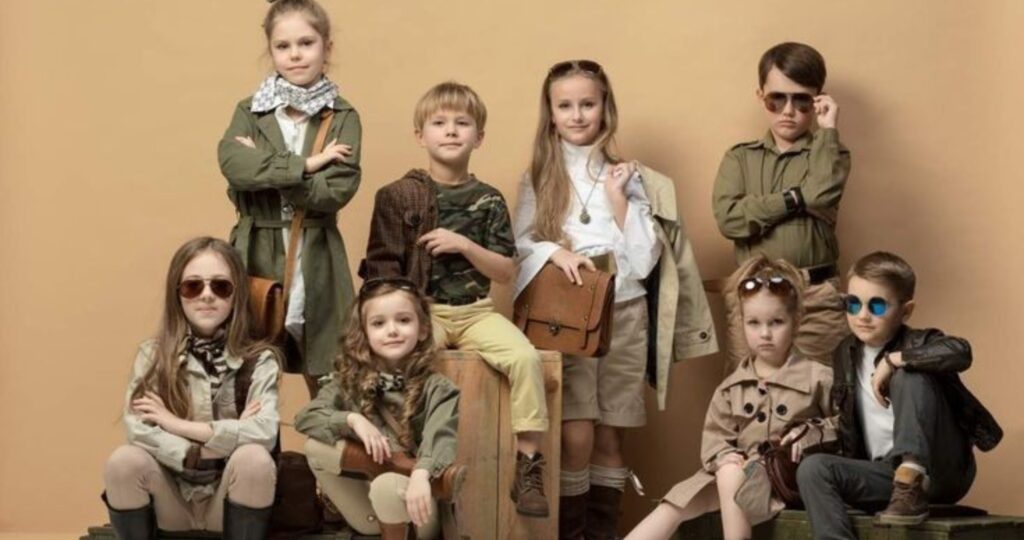Children's clothing
Children’s School Uniforms: Comfort, Style, and Practicality
Children’s School Uniforms: Comfort, Style, and Practicality

Introduction to Children’s School Uniforms
School uniforms play an important role in the daily lives of children. They are not just pieces of clothing but symbols of unity, discipline, and identity within the school environment. Choosing the right school uniforms ensures that children feel comfortable, confident, and ready for the challenges of a school day.
In this article, we will explore the essential elements of children’s school uniforms, from comfort to durability, and how they can be designed to meet both functional and aesthetic needs. We will also discuss the importance of school uniforms in the overall learning environment and how they have evolved to reflect modern values.
1. The Importance of Comfort in Children’s School Uniforms
Comfort is the most important factor when it comes to children’s school uniforms. A child spends several hours each day wearing their uniform, and it is essential that the clothing allows for freedom of movement. Whether the child is sitting at a desk, running on the playground, or participating in physical activities, their uniform needs to provide the comfort necessary for their growth and development.
Choosing the Right Fabrics
The fabric of plays a vital role in comfort. Natural fabrics like cotton and linen are popular choices for school uniforms due to their breathability and softness. These fabrics allow air to circulate, keeping the child cool during warmer months. Additionally, cotton and linen are gentle on the skin, which is crucial for children with sensitive skin.
In colder weather, uniforms made from wool or blended polyester offer warmth without being too heavy. These fabrics are durable and can withstand multiple washes, making them ideal for school use. Many schools now offer a range of fabric options to ensure that uniforms are suitable for various climates and seasons.
Proper Fit
The fit of the uniform is equally important. It should not be too tight or too loose. A well-fitting uniform allows for easy movement and provides comfort throughout the day. Loose clothing can become a distraction, while tight clothing may cause discomfort and limit movement. Therefore, when selecting , it is important to choose the right size based on your child’s body type.
2. The Role of Style in Children’s
While comfort is crucial, style also plays a significant role in children’s. A stylish uniform can boost a child’s confidence and make them feel proud of their school identity. Many schools today are moving away from traditional, plain designs and offering more modern, fashionable options for students.
Modern Designs and Customization
Many schools now offer more varied designs for children’s allowing for a degree of customization. For example, some schools allow students to choose between skirts, trousers, or shorts, depending on their preference. Others may allow for minor accessories, such as colored socks, hairbands, or ties that add a touch of individuality while still maintaining a uniform look.
In addition to these options, schools are also incorporating more color into their uniforms. While traditional uniforms were often dominated by neutral colors like navy and gray, many schools now include colors like red, green, or even pastel tones to make the uniform more vibrant and exciting for students.
Gender-Inclusive Uniforms
Another important trend in the evolution of is the movement toward more gender-inclusive options. In the past, uniforms were often designed with strict gender roles in mind, with skirts for girls and trousers for boys. However, many schools are now offering more flexible uniform policies that allow all students, regardless of gender, to choose their preferred clothing option. This promotes equality and ensures that students feel comfortable and confident in their uniforms.
3. Durability and Practicality in
School uniforms need to be durable and practical because they are worn every day and are subject to wear and tear. The fabric must be able to withstand frequent washing, as children can often get their clothes dirty during recess, lunch, or art class. Choosing the right materials and designs ensures that uniforms can withstand the rigors of daily use.
Stain-Resistant Fabrics
One of the challenges of children’s is keeping them clean. To address this, many uniform manufacturers now offer stain-resistant fabrics that help reduce the impact of spills and stains. These fabrics are treated with special coatings that repel dirt and liquids, making it easier to keep the uniform looking fresh.
Reinforced Features
Another aspect of durability is the reinforcement of high-wear areas, such as knees, elbows, and hems. Many uniforms are designed with additional stitching or extra layers of fabric in these areas to prevent them from wearing out quickly. This is especially important for younger children who are more likely to engage in active play, which can cause their uniforms to become damaged more easily.
4. The Impact of School Uniforms on Learning Environment
are more than just clothing—they can have a positive impact on the overall learning environment. Uniforms contribute to a sense of equality and unity among students, helping to minimize social pressures related to clothing choices. When everyone wears the same uniform, it reduces the possibility of bullying based on fashion or economic status.
Promoting Discipline
The structured nature of promotes discipline and helps students understand the importance of presenting themselves appropriately. Wearing a uniform can foster a sense of pride in their school and encourage a focus on learning rather than on clothing choices. This is especially important in schools that aim to maintain a professional and focused environment.
Fostering a Sense of Belonging
When students wear the same uniform, it creates a sense of belonging and unity. This is particularly important in schools where the emphasis is placed on community and teamwork. A uniform serves as a symbol of being part of a larger collective, where everyone is equal regardless of background or appearance.
5. The Future of School Uniforms
The future of children’s looks promising, with continued innovations in design, fabric, and inclusivity. As schools continue to embrace sustainability and individuality, we can expect to see even more diverse uniform options in the years to come.
Sustainable Fabrics
As environmental awareness increases, many schools are considering the use of eco-friendly fabrics for their uniforms. Sustainable materials such as organic cotton and recycled polyester are becoming more common in school uniform designs. These fabrics help reduce the environmental impact of mass production while still providing durability and comfort.
Personalized Uniforms
In the future, we may also see more personalized uniforms that reflect individual students’ tastes and preferences while maintaining the overall structure of the school’s dress code. This could include allowing students to choose from a range of color options, adding custom logos, or even allowing students to personalize their uniform items in a way that maintains a cohesive school identity.
6. Conclusion
Children’s are a vital part of the educational experience. They offer a balance of comfort, style, and practicality that helps students focus on their studies and feel proud of their school identity. As continue to evolve, we can expect to see more flexible, sustainable, and inclusive designs that meet the needs of both students and schools. Whether it’s for everyday wear or special school events, the right school uniform can help children feel confident, comfortable, and ready to take on the world.
